
This month, Sri Lanka elected an avowedly left-wing president for the first time. The new administration will be caught between the expectations of its supporters for change and pressure from the IMF to continue with a destructive austerity program.
Sri Lanka elected its first left-wing president on September 21. Anura Kumara Dissanayake received 42 percent of votes cast, in the first test of public opinion since the island state of twenty-two million people became bankrupt in 2022.
The leader of the Janatha Vimukthi Peramuna (JVP, People’s Liberation Front) and its National People’s Power (NPP) coalition, who is popularly known as “AKD,” now sits where a popular uprising two years ago drove out Gotabaya Rajapaksa at the mid-term point in his presidency. To right-wing surprise, the Colombo stock exchange rallied following the declaration of the result.
It was not the landslide that AKD’s supporters had insisted was on its way, falling short of the 50 percent plus one vote needed for a first-round victory. His election to the presidency came after the distribution of second-preference votes from the eliminated candidates, confirming AKD’s clear lead over his nearest rival, former leader of the opposition Sajith Premadasa.
Nor did he receive the same level of support from Tamil and Muslim ethno-religious minorities (a little under 25 percent of the population) as from the Sinhala (largely Buddhist) majority in a divided postwar society. Still, this outcome is an incredible upset, against all the obstacles of power, class, and capital that were standing in AKD’s way. It was simply unimaginable until quite recently.
Having scored only 3 percent of votes cast in 2019, how was AKD propelled into the highest office in the land in just one electoral cycle? What are the origins of the JVP and how has it evolved? What is the new government’s program and likely direction, and what immediate challenges does it face?
Popular Uprising and Its Aftermath
This month’s political earthquake cannot be understood without recalling the people’s movement (janathaaragalaya, “people’s struggle” in Sinhala) in 2022. During the first half of that year, peaking between early April and early July, many hundreds of thousands of people took to the streets, whether in self-organized neighborhood actions or large-scale protests in Colombo, without a unified leadership or coherent demands beyond calling for the resignation of the president (#GotaGoHome) and an unclear form of “system change.”
By the beginning of that year, in a slow-burn crisis that began smoking during the COVID-19 pandemic, foreign exchange reserves hit rock bottom, depleted by sovereign debt repayments, defense of the plummeting rupee, and dwindling government revenue. Unable to pay for imports of fuel, food, and pharmaceutical supplies, the country simply stopped functioning.This month’s political earthquake cannot be understood without recalling the people’s movement in 2022.
There was rationing of energy for travel and household consumption; schools and small businesses closed; essential medicines were scarce; staple consumables were unavailable or else suddenly much costlier. As of April, foreign creditors knew Sri Lanka would default on the billions of US-dollar debt due that year, and the government ran to Washington, DC, for a bailoutfrom the lender of last resort.
Initial disbelief and frustration at the incompetence of a government elected on a near supermajority in presidential and parliamentary polls in 2019 and 2020, respectively, quickly boiled over into rage against all the politicians and parties in power since Sri Lanka gained independence from Britain in 1948. People of all classes connected their suffering with the political establishment’s entrenched self-interest and grand corruption that manifested in one mega-scam after another.
During the protest movement, the goal was mostly to remove the incumbent president, Gotabaya Rajapaksa, and the wider Rajapaksa clan installed in government and national politics, including his older brother, the former president Mahinda Rajapaksa. Other targets were the members of the legislature, who protesters sought to replace in an early election with untainted new representatives of the people.
However, once Rajapaksa and his family members were ousted from government, Ranil Wickremesinghe, the historic leader of the neoliberal right, maneuvered himself into the presidency. Wickremesinghe resisted demands for parliament to be dissolved and reconstituted afresh. He violated human rights and the Constitution through the detention and repression of activists and by postponing the election of local government bodies, while subjecting the poor and powerless to an International Monetary Fund (IMF) austerity program, all for the sake of stability (for the powerful) and recovery(for the rich).
In fact, until the day of the presidential election, many feared that Wickremesinghe would engineer an auto-golpe to cling onto power, rather than submit to humiliation at the ballot box. In the aftermath of AKD’s win, the general election called for November 14, with its opportunity to cast out the old guard across all political parties, is some unfinished business from two years ago.
The JVP’s Rise
The JVP-NPP neither sparked the uprising nor steered it. It was one among several currents in that moment. However, its narrative and message became the common sense of an amorphous multiclass movement saddled with a middle-class consciousness.
The JVP for many years has hammered into public discourse the idea that Sri Lanka’s political and economic problems are an outcome of entrenched corruption in both spheres. Its popularity rose as it exposed bribery and graft in government, while also highlighting waste and inefficiency in use of public funds. What the party has not done — as one might have expected from a group of Marxist origins — is explain how corruption is a matter of political economy, and its nexus with capitalism rather than wicked people and weak institutions.
Uniquely among Sri Lanka’s parliamentary parties, JVP-NPP representatives have a reputation for being free of criminality and abusive behavior in their public and private lives, as disciplined members of a moral organization. During and after the uprising of 2022, expanding sections of society, well beyond the traditional social and ethnic constituency of the party-alliance, began to see it as an ethical alternative to the traditional political class, and an agent for systemic change.
To appreciate the significance of this shift in public opinion toward the JVP, we need to offer a quick recap of its evolution over the past thirty years and the background of its current leader. The JVP’s founders in the mid to late 1960s were young ethnic Sinhala cadres from the Ceylon Communist Party (CCP) who were attracted to Maoism. This was a period during which the CCP divided into pro-Soviet and pro-Chinese groups; the JVP first developed as a split from the latter.
Since then, the JVP has defined itself as a Marxist-Leninist party. However, it has also assimilated Sinhala Buddhist culture and ideology, and championed Sinhala nationalism in the recent past against both external (“Indian expansionism”) and internal (“Tamil separatism”) threats to state sovereignty and territorial integrity.
The JVP organized two insurrections against the state under the leadership of its founder, Rohana Wijeweera. The 1971 revolt was against the left-wing United Front government of Sirimavo Bandaranaike, in which the Lanka Sama Samaja Party, formerly part of the Trotskyist Fourth International, and the pro-Soviet CCP were junior coalition partners. Public sympathy then and thereafter lay with the students and youth who took up arms for social change but were wantonly killed or incarcerated for years in rehabilitation camps.
Wijeweera and others were released in 1977 following the change of government. The ban on the party was also lifted, allowing it to begin open political work among various social groups, including workers, university and school students, Buddhist clergy, and low-ranking military officials. Wijeweera was the JVP candidate in the 1982 presidential election, where he took 4 percent of the vote.
Second Revolt
The next turning point came after the anti-Tamil state-sponsored violence of July 1983. The JVP and two other left parties, none of which had any involvement in the pogrom, were banned by the right-wing government of J. R. Jayewardene, Ranil Wickremesinghe’s uncle, whose United National Party had in fact led the violence.
Once again, the JVP went underground. It began collecting arms, robbing banks for funds, and military training. The state was now at war with multiple Tamil militant organizations in the north and east of the island. The JVP, though itself at war with the state, was virulently opposed to self-determination for the Tamil nation.
India heightened its intervention in the internal armed conflict, stationing troops in the Tamil-majority north and east of the island, and there was an Indian-brokered regional government set up with limited powers as a political solution to the war. It was at this point that the JVP launched its second insurrection between 1987 and 1989.
Whereas the revolt of 1971 had been intended to follow the star of socialism, this time around it was launched under the sign of Sinhala nationalism. The weakening of working-class consciousness and the decline of left trade unions and parties by the 1980s contributed to this reactionary turn. The JVP mobilized a Patriotic People’s Movement (PPM) that reached beyond its members in opposition to India’s role in the ethnic conflict as well as against the right-wing government of the day.
The JVP-led PPM assassinated officials and supporters of the ruling party as well as the families of state security personnel and its own left-wing opponents, including student leaders, trade unionists, and peasant organizers. The violence unleashed by the JVP was returned many-fold by the state in a wave of repression that killed between 40,000 and 60,000 young men and women.
Once again, the JVP was quashed. This time Wijeweera’s life was not spared after his capture in 1989. The memory of this era of terror (bheeshanaya in Sinhala) by the JVP was exploited by its rivals in the 2024 election, seeking to roll back the wave in its favor.
Reconstruction
It is during the next phase of recovery and rebuilding for the JVP from the early 1990s that Anura Kumara Dissanayake began his climb within the party. He came from a small farmer household in rural north-central Sri Lanka and studied in local schools attended by children of the poor. His father was a minor worker in a government department.
Dissanayake joined the JVP in the late 1980s and was active in its student wing at a public university on the outskirts of Colombo, where he obtained a physical sciences degree. Somehow, in this time when even the rumor of association with the JVP could prove a death sentence, he escaped with his life, unlike many of his contemporaries.
By the mid-1990s, he had become national organizer of the party’s Socialist Students’ Union, entering the JVP’s central committee. In 1998, he was elevated to the JVP politburo. Two years later, he entered parliament for the first time and has retained his seat since. In 2014, he became the JVP’s top leader, only the fifth since its foundation (the first three having been extrajudicially killed by the state in rapid succession between November 1989 and January 1990).
The JVP has been in national government only once before. In 2004–5, it formed part of a short-lived coalition, where AKD was responsible for the politically significant agriculture portfolio. It helmed a local body in the southern province around the same time.
The late 1990s and early 2000s was also a period when the JVP actively mobilized in street demonstrations and even strikes against peace talks with the Liberation Tigers of Tamil Eelam (LTTE). It supported the Sinhala-nationalist presidential campaign of Mahinda Rajapaksa in 2005 and promoted a return to full-scale war after his victory, with JVP leaders visiting the front lines to motivate the military. The party also successfully petitioned the Supreme Court to separate the northern and eastern provinces that Tamil nationalists view as their traditional homeland.The JVP has been unable to make a political breakthrough in Tamil-majority areas, despite conscious efforts to organize there.
This orientation of the JVP within living memory helps explain why it has been unable to make a political breakthrough in Tamil-majority areas, despite conscious efforts to organize there. In the 2024 election, however, there was a marked change of attitude in the north and east, as the NPP vote share shot up from 1 percent in 2019 to between 7 percent and 10 percent in the Tamil-majority north. It also won between 20 and 25 percent of the vote in the evenly mixed east, where significant numbers of Muslim and Sinhala youth turned out for AKD.
The JVP’s militaristic stance and proximity to Sinhala ethnonationalism also provoked two schisms within the party: a right-wing, racist split (National Freedom Front) in 2008 and a left-wing, socialist one (Frontline Socialist Party) in 2012. However, the parent party has retained its main organizations, including powerful public and private sector trade unions, as well as its representation in elected institutions.
The NPP Program
Through the formation of the National People’s Power (NPP) coalition in 2019, the JVP was seeking to arrest and reverse its electoral marginalization by broadening its class base, and to shake off its past ideology without formally renouncing its history.
Although the JVP has had a continuous presence in parliament over the past three decades with the largest bloc of left parliamentarians since 2000, the size of that bloc has fluctuated widely during that period (Table 1). It was widely hailed as the “third force” in parliamentary politics yet trailed far behind the two alliances that have taken turns in government. The role of “permanent opposition,” principled but powerless, was one that liberals and some leftists believed to be the party’s destiny.
Table 1: JVP Parliamentary Strength 1994–2020
| Seats (out of 225) | |
| 1994 | 1 |
| 2000 | 10 |
| 2001 | 16 |
| 2004 | 39 |
| 2010 | 4 |
| 2015 | 6 |
| 2020 | 3 |
In 2019, the JVP launched the NPP as a “progressive” electoral front rather than an explicitly left-wing one. Its partners in that front are mostly civil society organizations of younger political, labor, and cultural activists, with a sprinkling of older (male) Marxists from the shipwreck of the Sri Lankan left. It is multiethnic and multireligious, though Tamil and Muslim representation is low. There are more women in its national leadership than in the other parties.
However, the NPP is wholly dependent on the JVP for its existence and organizational infrastructure. The main asset it offers the JVP is the class and social profile that the latter has eagerly courted on its path to power. The JVP now counterposes “rule by experts” — that is, academics, professionals, and entrepreneurs — to the despised “rule by politicians.” In its estimation, it is the “educated” middle class that must represent those who cannot represent themselves, while politicians execute the policies they advise.
However, the middle class, no less than the elite, finds the JVP’s outward appearance and past deeply alarming. To assuage such fears, the JVP through the NPP has shifted programmatically to the center left. While voicing criticism of neoliberalism, it now echoes its repertoire.
According to the NPP’s current perspective, the private sector is the engine of growth while the role of the state is to monitor, facilitate, and regulate markets. Sri Lanka must grow and diversify its export revenues, implement free trade agreements, and attract foreign capital, with a business environment tailored to the needs of investors. Investment promotion zones should spread across the island and the capital market should expand.
On the other hand, the NPP’s manifesto departs from the tenets of market fundamentalism by emphasizing the importance of domestic industrial and agricultural production and the need for state support to industries and farmers. It calls for concessionary credit for small and medium enterprises, and relief from microfinance loans taken by women at usurious rates of interest.
The alliance opposes the privatization of state-owned enterprises and promises to increase cash transfers to the poor while removing indirect taxes on essential foods, drugs, and local industrial products. It also pledges to conduct an audit of Sri Lanka’s external debt to identify what portion of it is odious and illegitimate.
In the area of human rights and political reforms, the NPP vows to abolish the draconian Prevention of Terrorism Act, respect workers’ rights, and promote collective bargaining. It also wants to introduce a new constitution that will abolish the executive powers of the president and devolve authority to the regions, including the Tamil-majority north and east.
Challenges
Lacking a parliamentary majority, and acutely aware of public disapproval for the existing cohort of MPs who mostly come from the Rajapaksa party, AKD dissolved parliament soon after he was sworn in. Parliamentary elections had been due to be held before August of next year. He has formed a caretaker government with his party’s three current legislators.
His appointment of the NPP’s only female parliamentarian as the prime minister — a post which is less powerful than that of the presidency, rather like the French system — has been well received. The general election will take place on November 14. With one election campaign just concluded, another one begins. The outcome of this election will determine whether the NPP has the mandate and numbers to drive through its legislative plans.
Meanwhile, AKD has affirmed, as repeatedly indicated during his campaign, that the NPP will continue with the IMF program. However, he intends to negotiate changes that will provide greater relief to the poor. The IMF has insisted that its economic targets and conditionalities are inviolable. If the NPP submits to that position, it must abandon its welfarist pledges and enforce unmoderated austerity.
The global ratings agency Moody’s gave the following assessment:
While Dissanayake’s election constitutes a major shift in Sri Lanka’s political landscape, we believe the broad appetite for reforms will remain intact. We do not expect significant disruption to the country’s reform agenda or macroeconomic policies, which include the ongoing debt restructuring and structural adjustments under its program with the International Monetary Fund.
The retention of two key officials who were aligned with the previous president and in thrall to the IMF as Sri Lanka’s Central Bank governor and Treasury secretary underlines the continuities that we should expect in terms of economic policy. As challenging as it will be for the new government to secure the majority it needs at the general election, a left-wing president will find it even harder to walk the tightrope between the IMF and foreign creditors on the one hand and the hopes and expectations of his followers on the other.
(This article was published in “Jacobin” magazine USA on 30th September 2024)
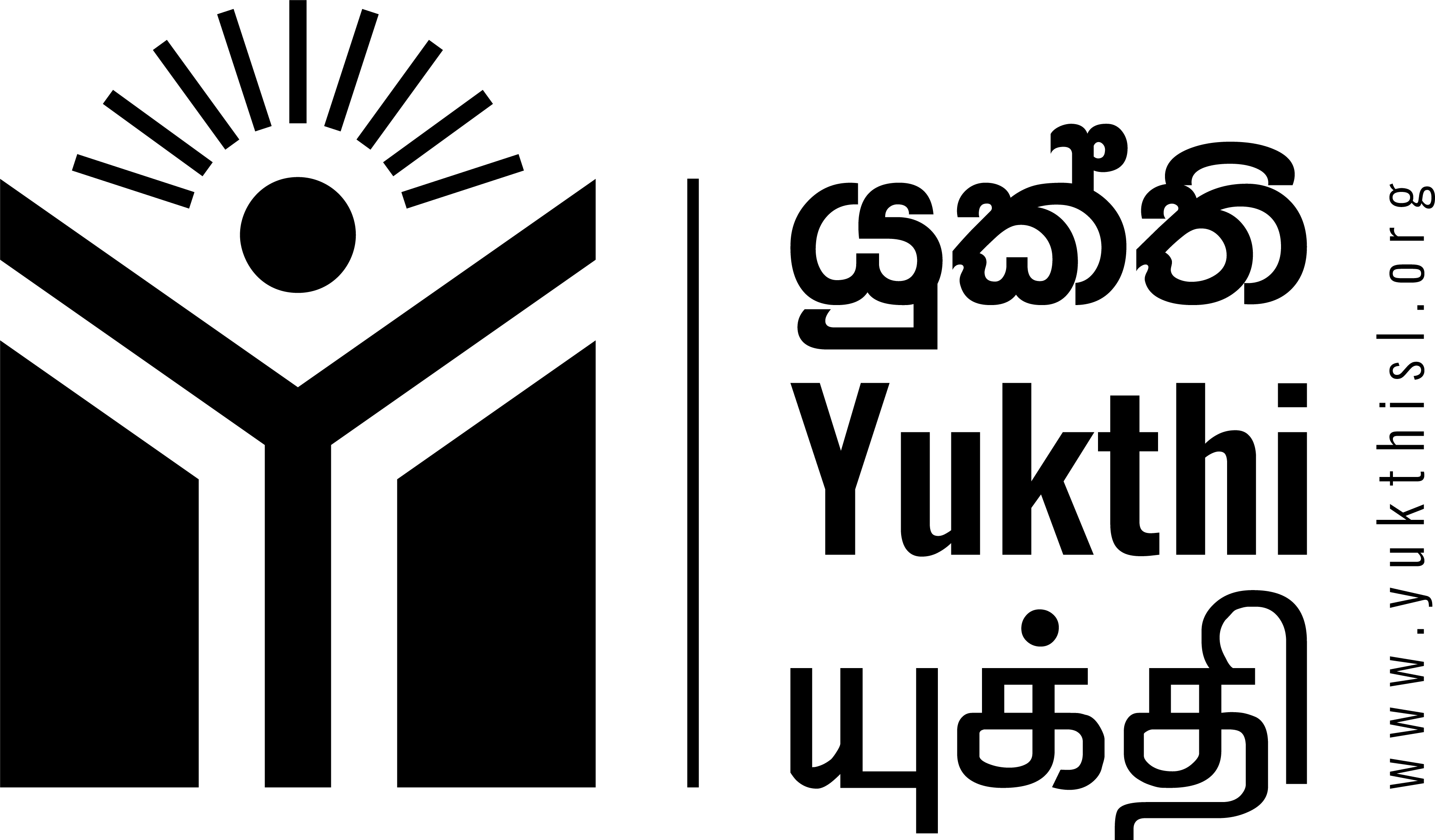
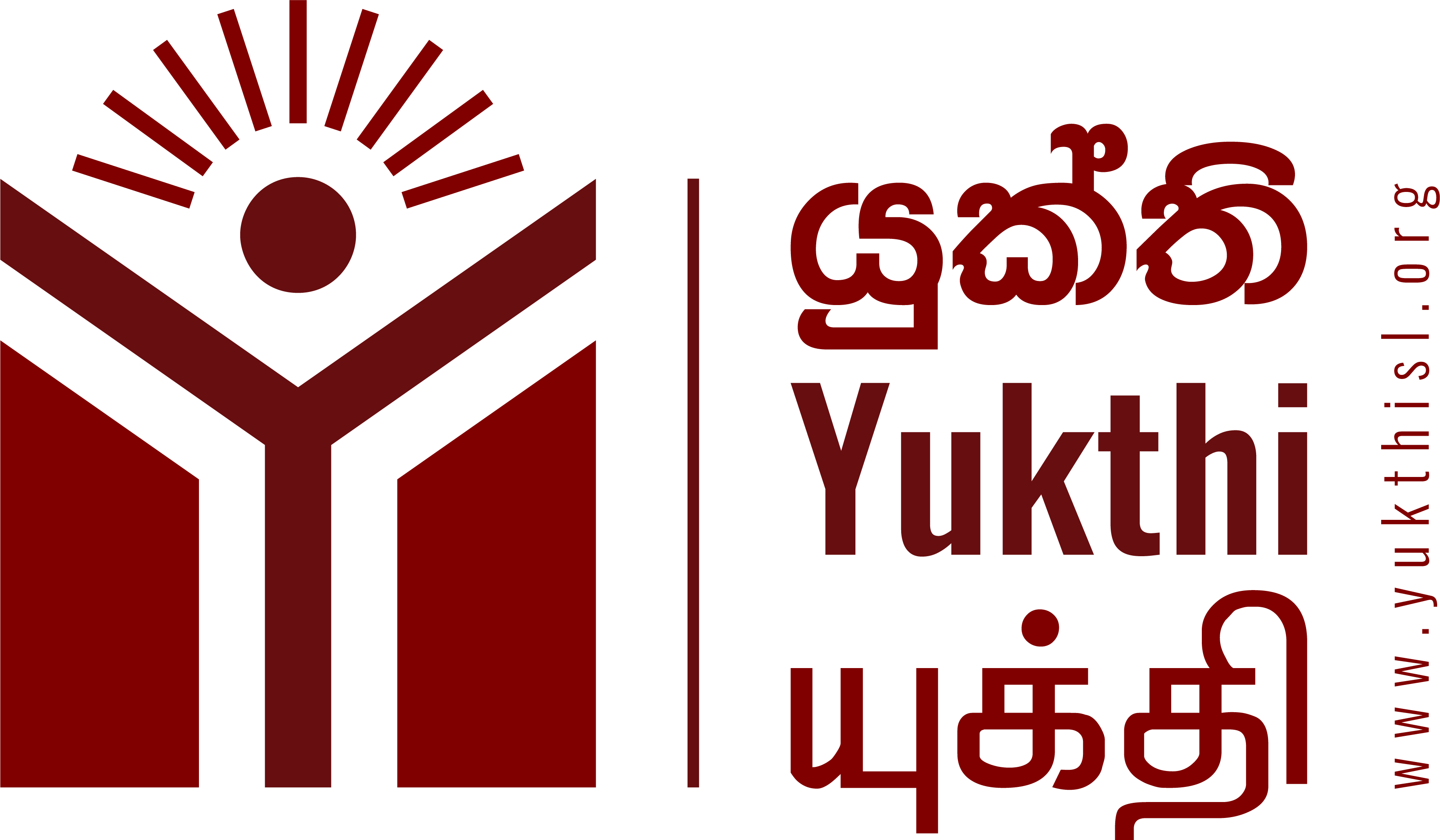
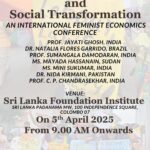
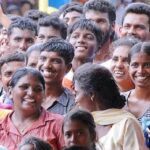
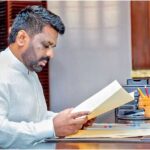
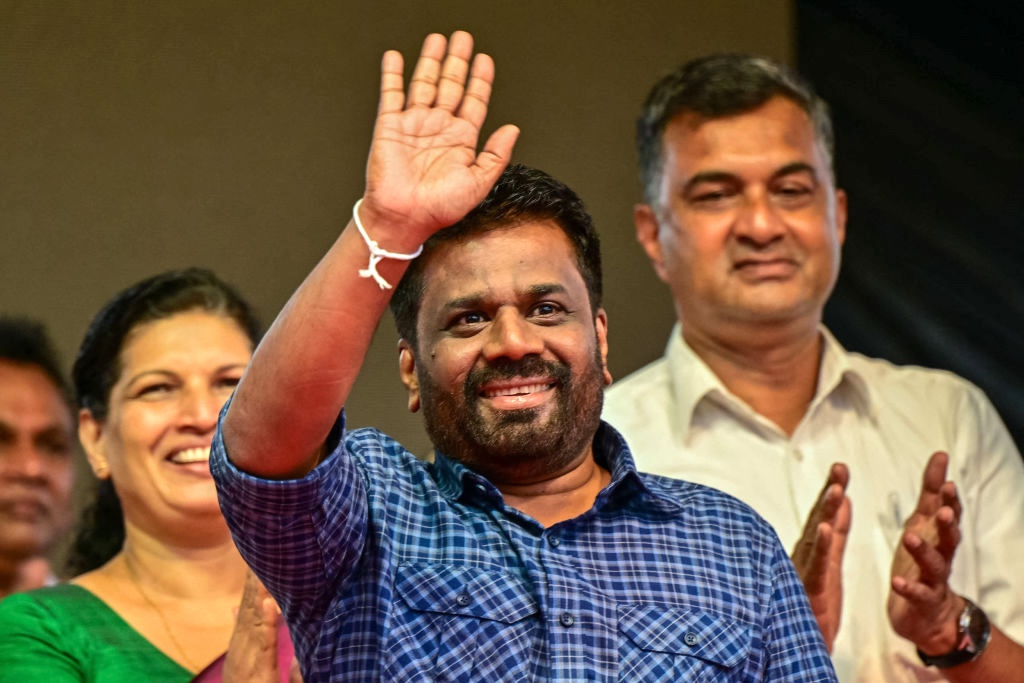

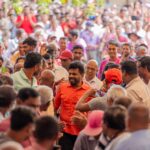
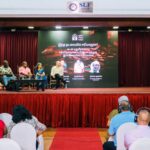
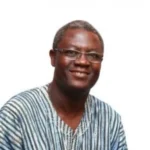


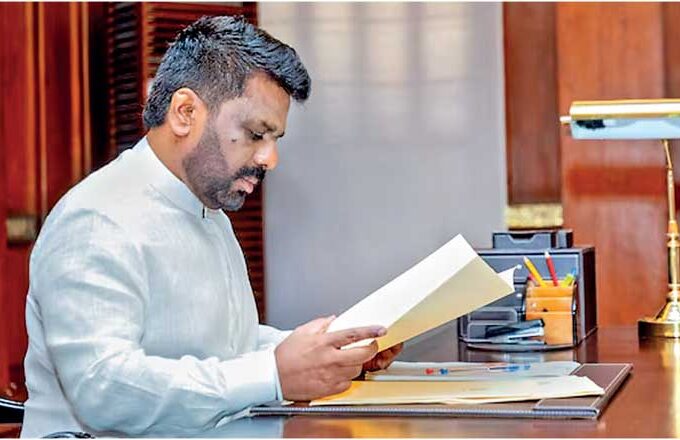
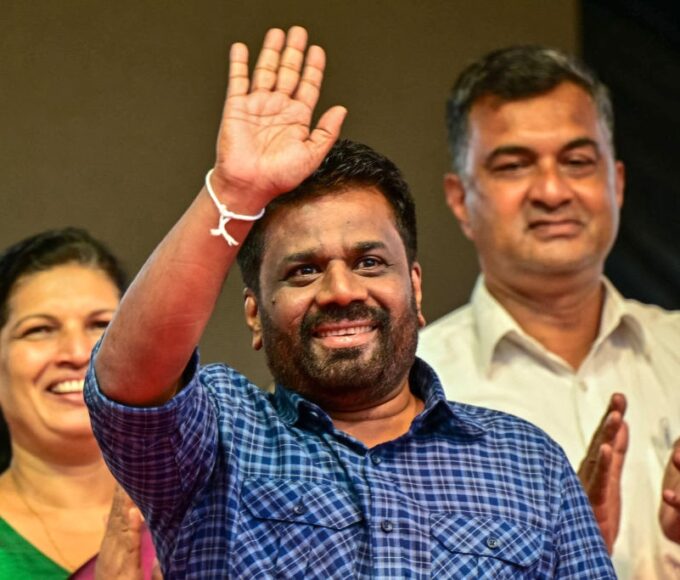

Leave a comment